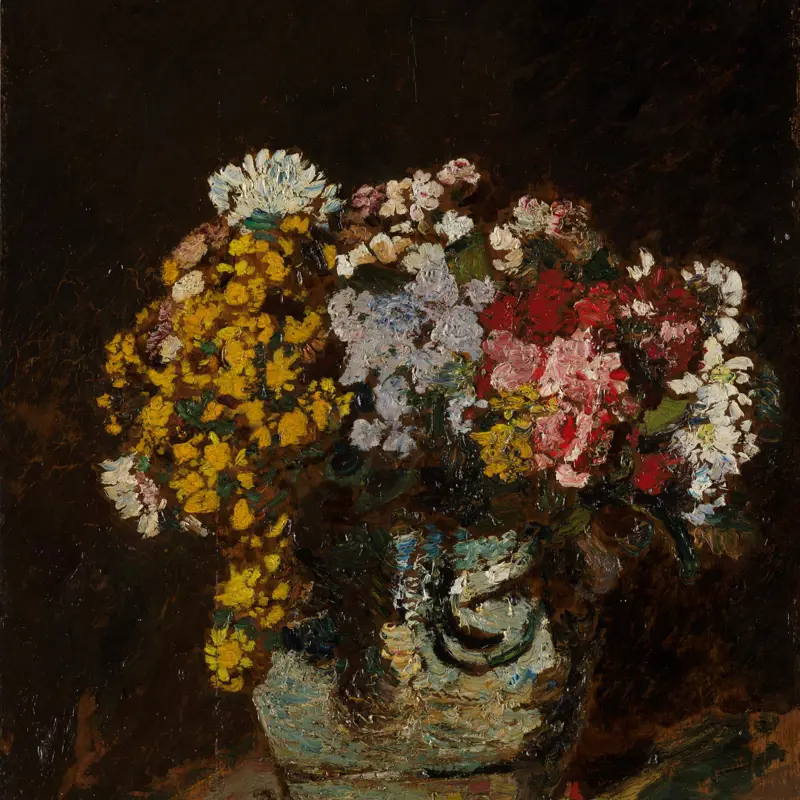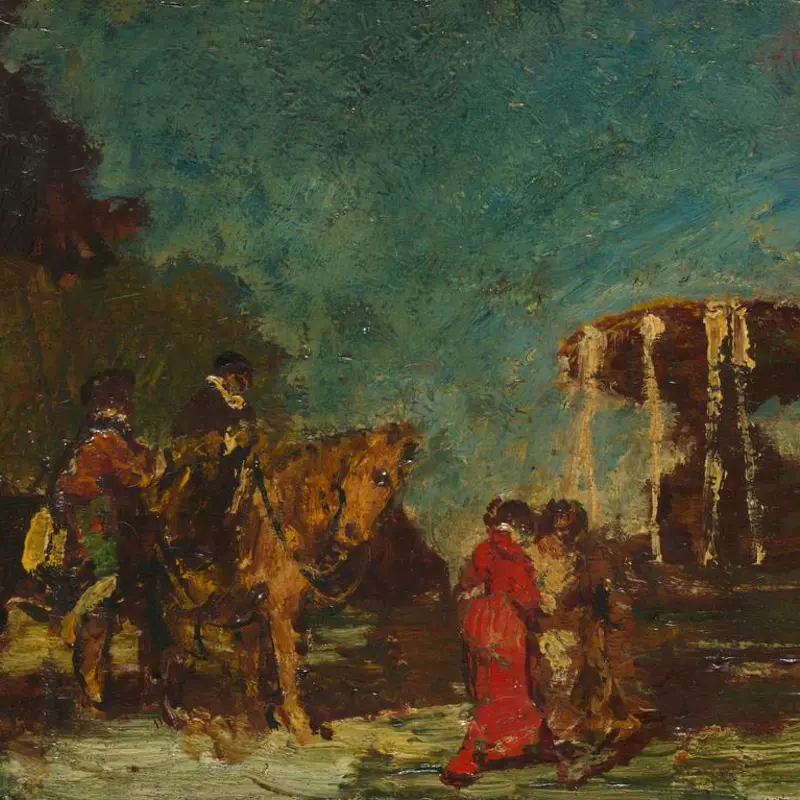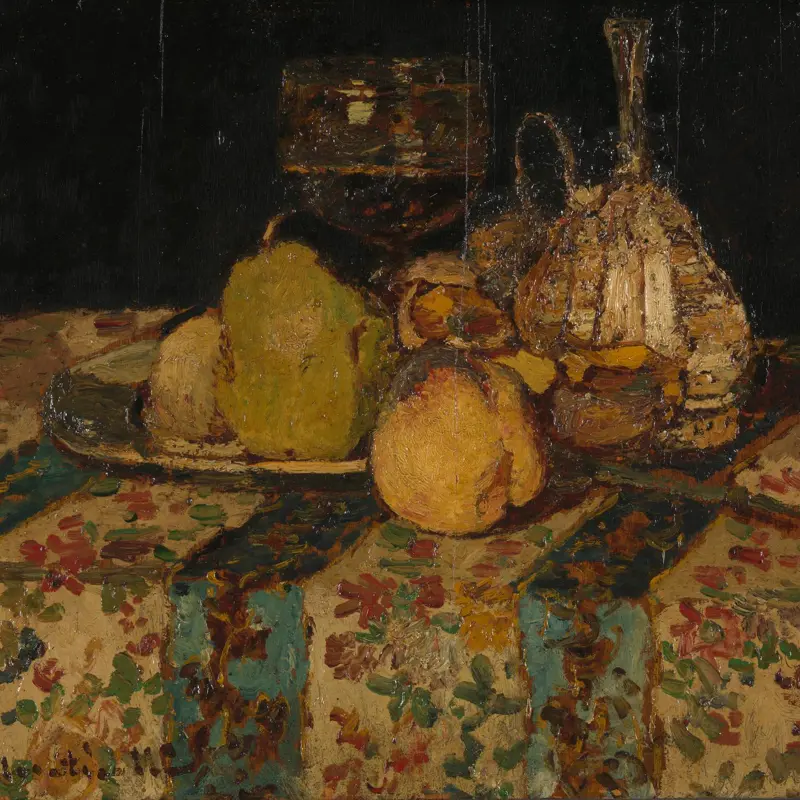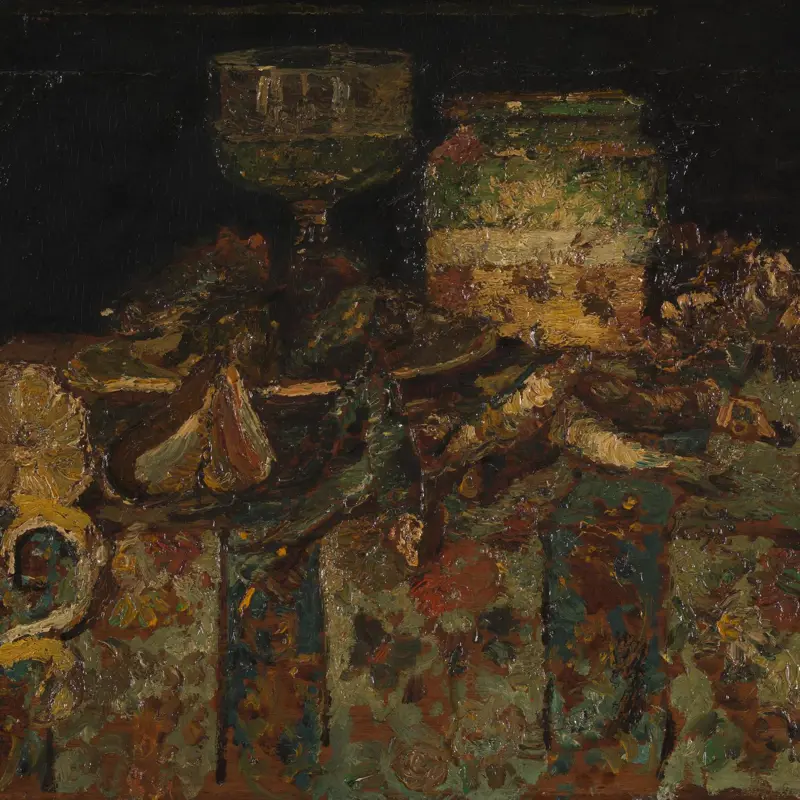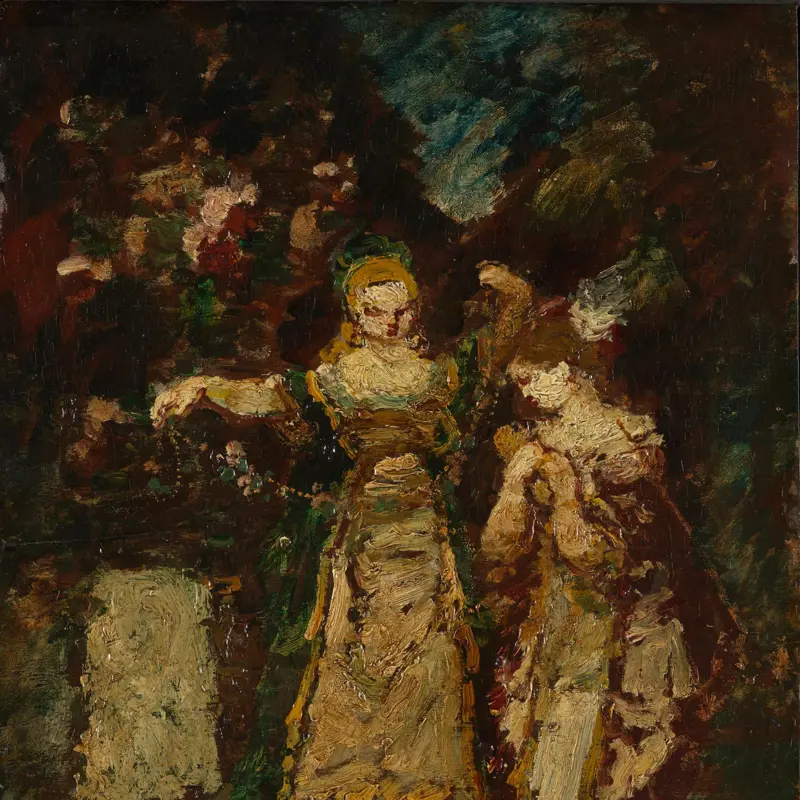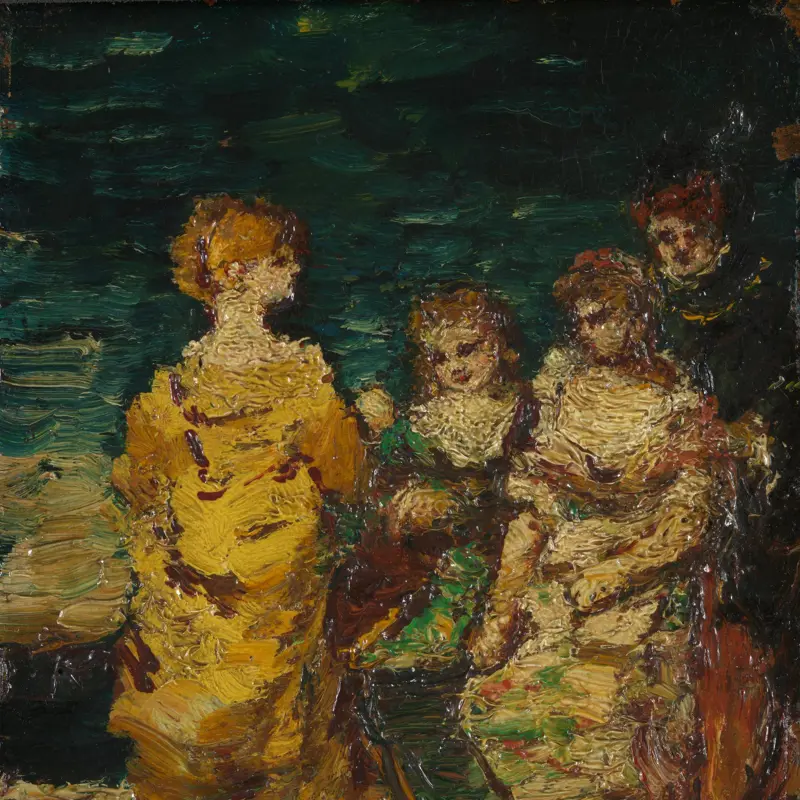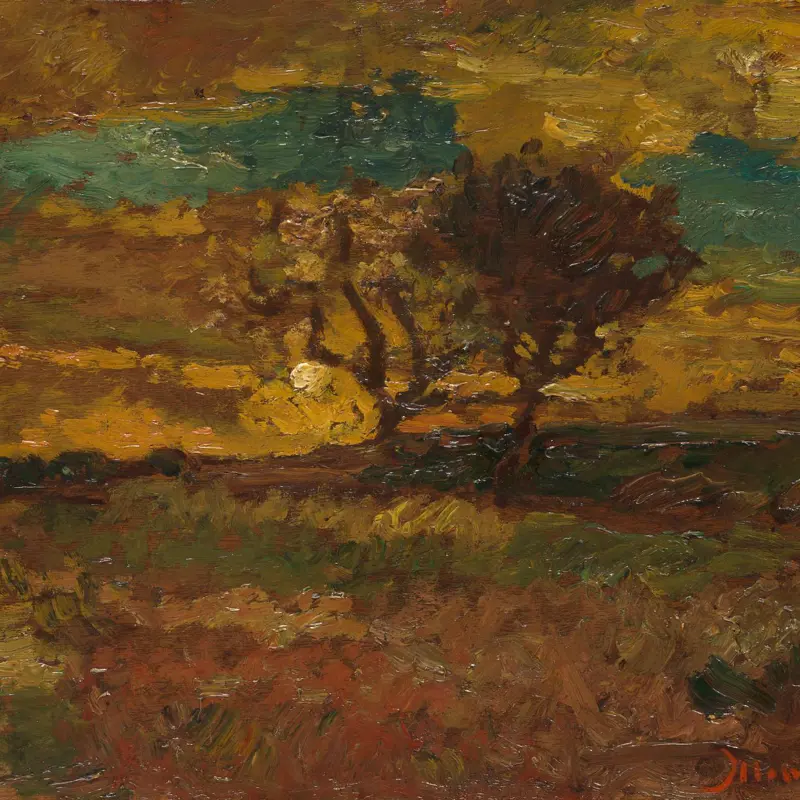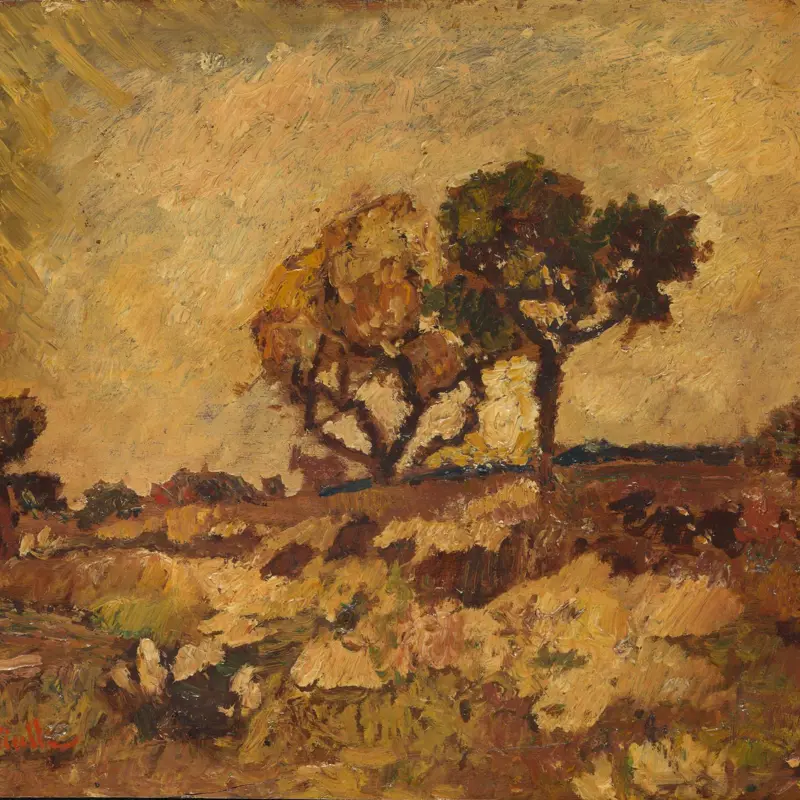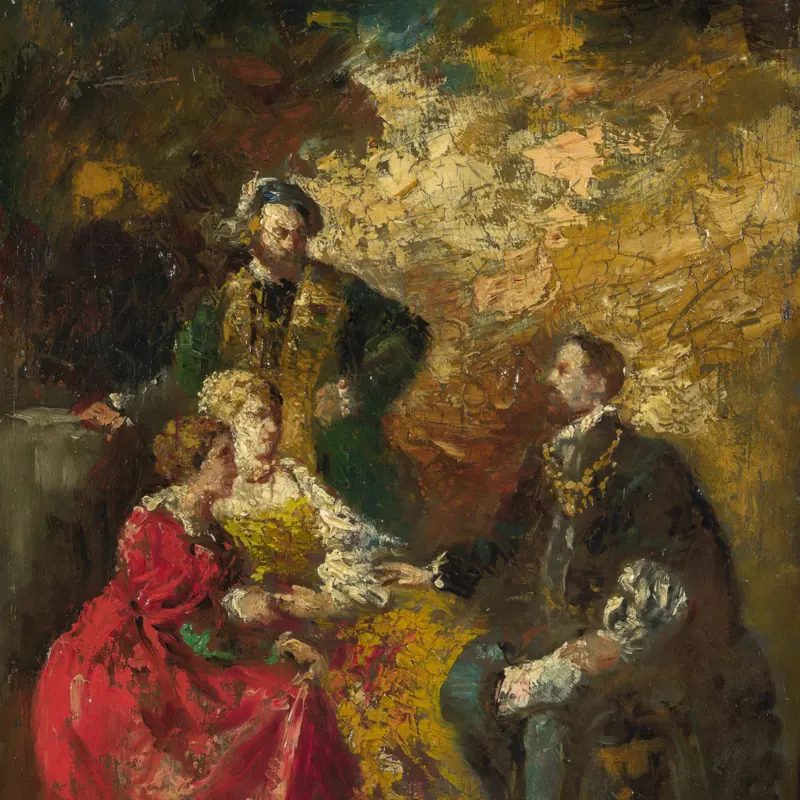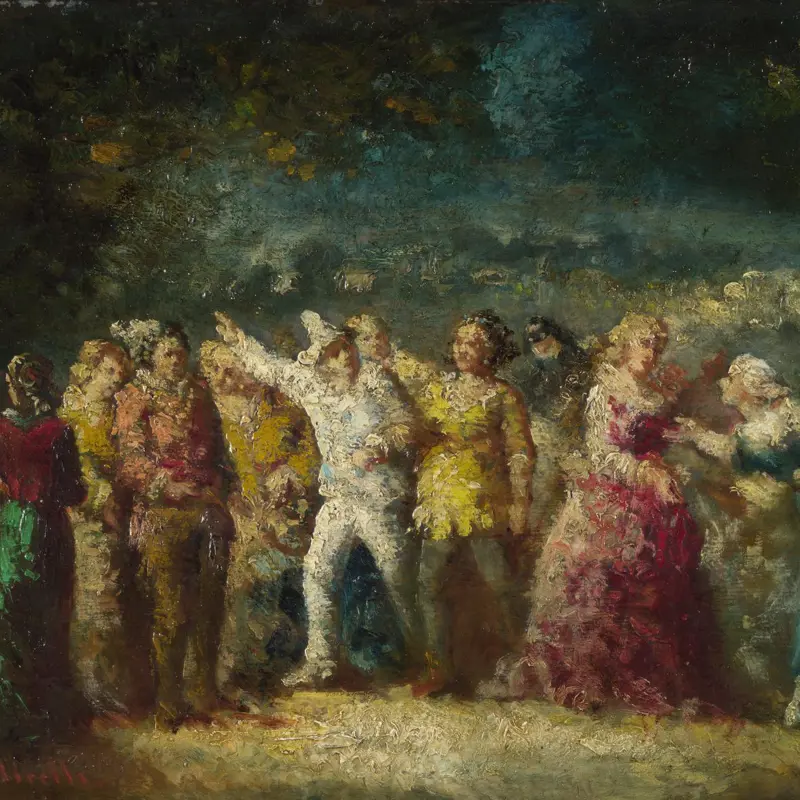Monticelli was born in Marseilles. He spent the years 1846-8 in Paris where he frequented the studio of Delaroche. On a second visit to Paris in 1856, he made the acquaintance of Diaz and was influenced by Diaz's use of colour and choice of subject. Van Gogh greatly admired Monticelli's work.
Adolphe Monticelli
1824 - 1886
Works by Adolphe Monticelli
(Showing 6 of 13 works)
A bunch of flowers in a ceramic vase is displayed on a table. The tablecloth is decorated with flowers and blue stripes that help create a sense of recession into depth.Like most of Monticelli’s works, this picture is painted on a wood panel, much of which is left visible. Thick paint and blobs...
A number of costumed figures on horseback and on foot, distributed in different groups in the foreground, are seen beside a fountain near a forest. On the left, four women wearing long dresses seem to be busy chatting and observing the two horsemen next to them. On the right-hand side of the pain...
Not on display
A number of grandly costumed figures are seen beside a fountain in an imaginary garden on the edge of a forest. Two men on horseback coming from the left are approaching a group of women standing in the centre but moved slightly to background. On the right, three other women and a dog are seen in...
Not on display
A wine glass, a flask-shaped carafe, a knife and a plate of fruit are shown on a table, set against a flat dark background. The table is covered by a cloth decorated with flowers and blue stripes that help create a sense of recession into depth.Most of Monticelli’s still life paintings were made...
Not on display
A drinking glass, a vase, a plate of oysters, some small fish – probably sardines – and a half-peeled lemon lie on a table against a flat dark background. The highly patterned tablecloth is also present in the artist’s Still Life: Fruit and A Vase of Wild Flowers (both in the National Gallery), m...
Not on display
Four women dressed in colourful Renaissance-style costumes are shown standing below what may be a vine. On the reverse of the panel is another image of a standing woman. The exact subject of this picture has not been identified. This is not surprising, since in Monticelli’s late career his techni...
Not on display
Two standing women and a seated dog are seen in what may be a park. The picture perfectly summarises the achievements of the new technique that Monticelli had developed by the mid-1870s. He was applying his paint thickly, varying the strokes in both size and direction, and he also enriched his co...
Not on display
During his stay in Paris in the 1860s Monticelli began to paint fêtes galantes. This term derives from the pictures depicting elegantly dressed men and women, generally placed in a parkland setting and engaged in conversation, that became popular in eighteenth-century France, most often associate...
Not on display
A bright yellow sun rises in the centre of the picture, beside a tree. Its vibrant colour stands out against the rest of the composition, which is darker in tone than its companion piece, Sunset, also in the National Gallery’s collection.Both Cezanne and Van Gogh were admirers of Monticelli’s use...
Not on display
The sun sets roughly in the centre of the picture, behind two tree trunks. The thick yellow paint expands from the sky to the foreground, and Monticelli has applied it using short, directional brushstrokes which allow him better to convey the light. Portions of the wooden panel used as a support...
Not on display
Two peasant women and a child stand on the left, and black and white cart horses on the right. In the background two wagons are fully loaded with hay, and a dog perches on top of the one in the centre. The skyline of a village is shown in the distance.Monticelli made a number of paintings of peas...
On display elsewhere
Imitator of Adolphe Monticelli
The specific subject of this picture has not been identified. Four figures that seem to be dressed in costumes of the era of Henry IV, around 1600, are shown busy in conversation.Although the picture is signed at the bottom left corner and it is the type of painting favoured by Monticelli, its au...
Not on display
Imitator of Adolphe Monticelli
Monticelli painted many imaginary scenes of costumed figures throughout his career. Here, a dozen characters are shown in colourful outfits, probably during a torchlight procession. The central figure in white appears to be dressed as Pulcinella, a character from Commedia dell'Arte plays. This su...
Not on display
You've viewed 6 of 13 works

